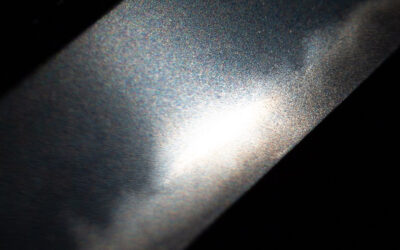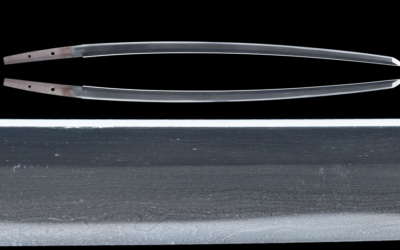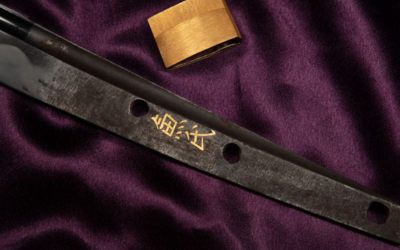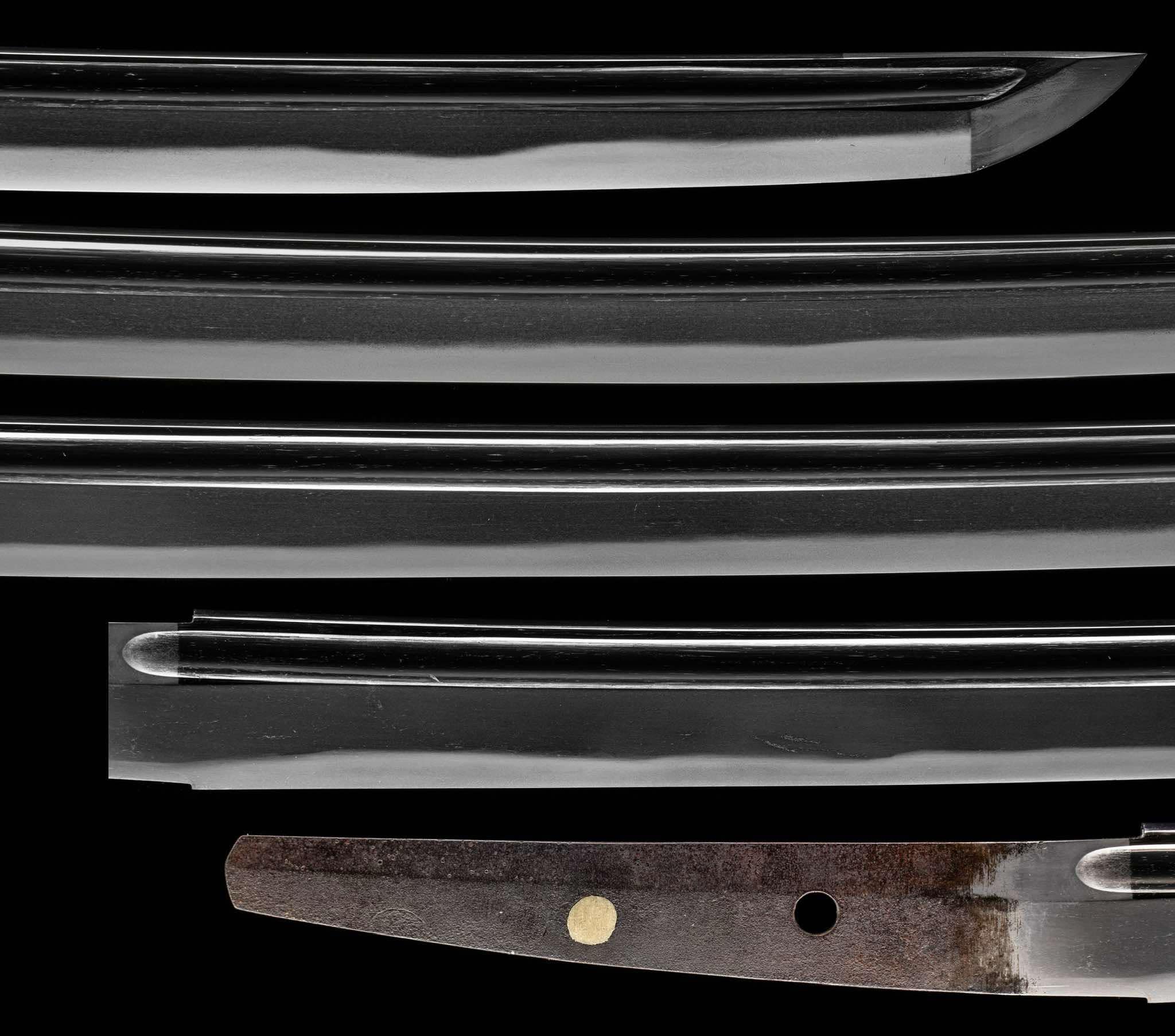
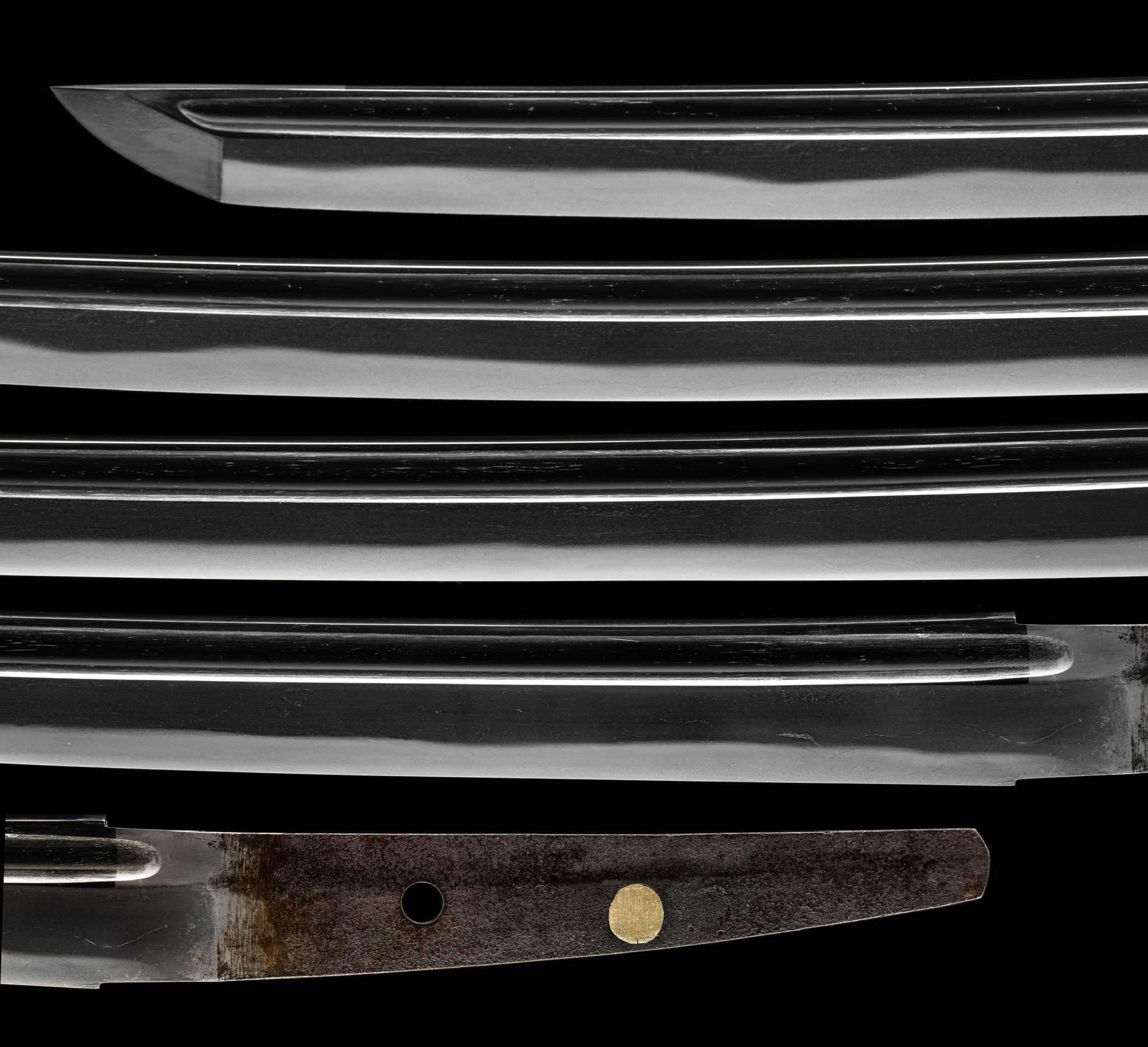

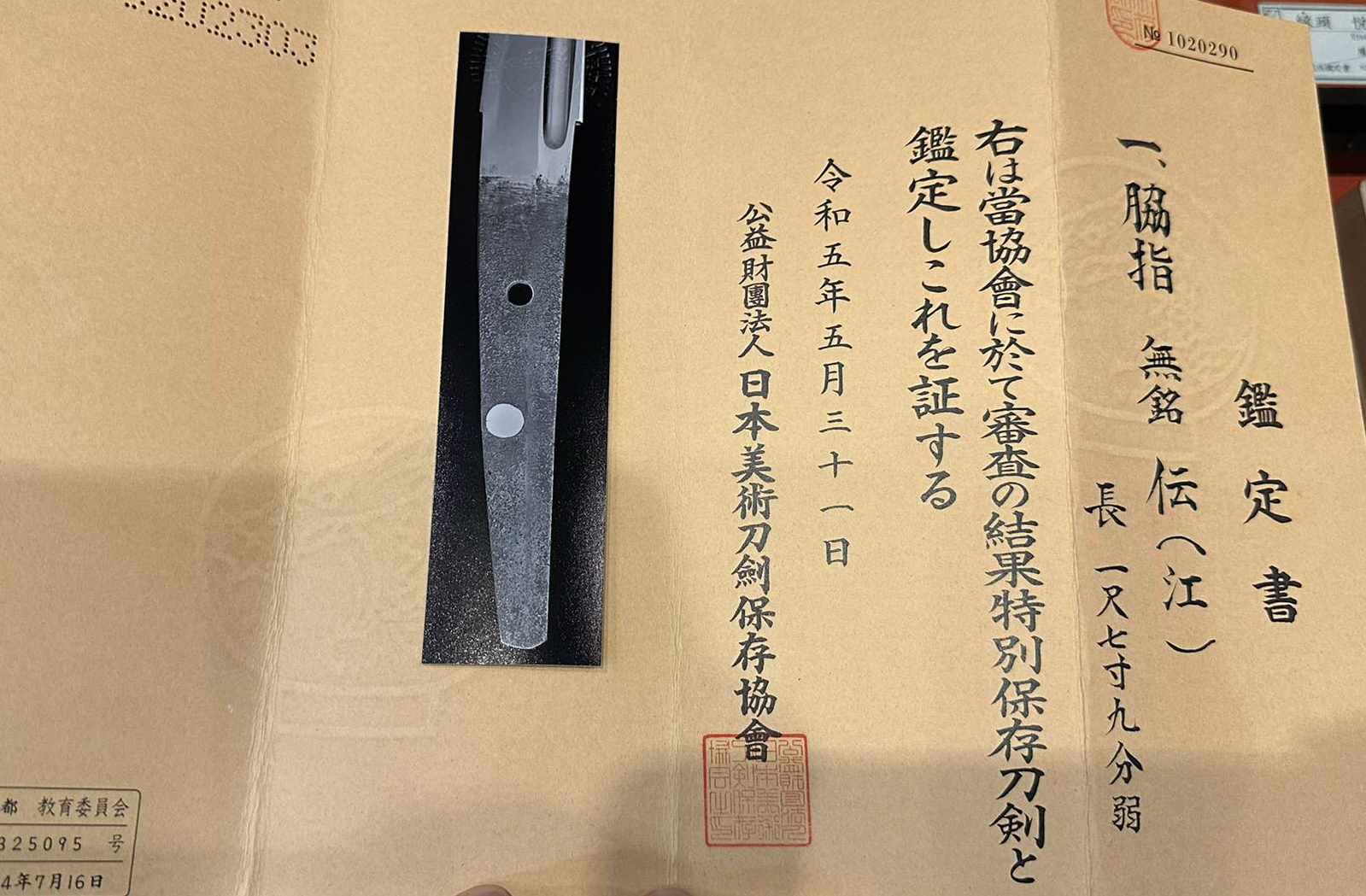
Project Info
Project Description
Go Yoshihiro is one of the most famous and important sword smiths to have lived. From the time of Toyotomi Hideyoshi he has been revered as one of the Nihon San Saku, the Three Great Smiths of Japan. His peers in this group are Masamune and Awataguchi Yoshimitsu. This is elite company to say the least, and he is the most skilled smith of the Masamune Juttetsu (the 10 great students of Masamune).
Sayagaki
越中松倉郷義弘
⼤磨上無銘⽽同⼯作ト傳フ細⾝・⼩鋒ノ姿態ヲ⾒セ反猶⾼ク地沸厚ク地景⼊ル肌合ニ直刃⼩乱ヲ焼キ沸厚ク煌メキ⾦筋頻リニ絡ミ砂流・湯⾛カゝリ相州傳上⼯ノ特味ヲ顕現シ就中地刃ノ冴エヤ⼀枚帽⼦ヲ勘案スレバ同⼯ノ所傳ハ⾸肯サレル優品也
刃⻑壹尺七⼨⼋分半惟時⼄⺒暦弥⽣探⼭識「花押」
Etchū Matsukura Gō Yoshihiro
Ō-suriage mumei shikamo dōkō-saku to tsutau. Hosomi, ko-kissaki no shitai o mise sori nao takaku ji-nie atsuku chikei hairu hada-ai ni suguha ko-midare o yaki nie atsuku kirameki kinsuji shikiri ni karami sunagashi, yubashiri kakari Sōshū-den jōkō no tokumi o kengen-shi nakanzuku jiba no sae ya ichimai-bōshi o kan’an-sureba dōkō no shoden wa shukō-sareru yūhin nari.
Hachō isshaku shichi-sun hachi-bu han, koretoki kinoto-hebidoshi yayoi Tanzan shirusu + kaō
Gō Yoshihiro from Matsukura in Etchū
This blade is ō-suriage and mumei, but was handed down as a work of Gō Yoshihiro. It is of a shape with a slender mihaba and a ko-kissaki, and still retains a deep sori, and displays a forging structure with chikei and plenty of ji-nie. The hardening is a suguha ko-midare with an abundance of sparkling nie, is interwoven with kinsuji, and features sunagashi and yubashiri, hence the blade reflects the typical characteristics of the early great Sōshū masters. Also taking into consideration the clarity of the jiba and the ichimai-bōshi, it can be said that within said group, this masterwork reflects the typical characteristics traditionally associated with Gō Yoshihiro.
Blade length ~ 54.1 cm. Written by Tanzan [Tanobe Michihiro] in March in the year of the snake of this era (2025) + monogram.
– Article below from Darcy Brockbank (yuhindo.com)
Go had the given name of Umanosuke, and is supposed to have been a samurai retainer of the Tomoi clan, took up swordsmithing very young and died at 27 years old (some references say 30) in or around 1325, leading to very few works being extant. He is said to have signed his works in two characters, but the small number left to us are now all o-suriage mumei (signature lost through shortening).
There exists an old saying that One never sees a ghost or a Go testifying to their rarity. We must keep in mind that this saying is several hundred years old, and has to be taken in the context where ghosts and demons, kami and supernatural powers were all commonly thought to exist, but of course personal experience with these was obviously very limited to say the least… about on a par to those who got to see the works of Go.
Albert Yamanaka explains this saying quite well in the Nihonto Newsletter:
There is a saying in Japan … “one never sees a ghost or a Go”, this means though we often read and hear about ghosts, we never see one and the same can be said for Yoshihiro’s blades as well. It is that rare. […] In the ancient Japan, when all of the famous blades were in the big Daimyo collections, the populace never did get to see these blades, but heard much about them and the above saying came into being.
Yamanaka also states that “Yoshihiro is included at the very top of the listing of swordsmiths,” in reference to his skill.
In terms of the lineage of Go, going far back there have always been stories and contentions that his teacher was Masamune. At this point in time Go is considered the greatest of the students of Masamune, and some would consider him to be a peer in skill. He has to his credit many famous works, including eight famous Meito (named swords) which are variously Kokuho (National Treasures) and Juyo Bunkazai or Bijutsuhin (Important Cultural Items and Artworks), and some are in the Imperial Collection. All through time his works have been highly sought after and held in the highest regard.
Go Yoshihiro hails from Matsukura county of Etchu province and is considered to have a relationship with Norishige, the nature of which is not exactly clear. His son is Tametsugu, who would go on to receive some teaching from Norishige due to the early death of his father. The early work of Go Yoshihiro is strongly flavoried with influence from Yamato, and mixes with Soshu den in creating vivid, beautiful and unique work.
The similarities with Norishige are visible in the patterns of the kitae, but where the work of Norishige appears to embrace the wildness of a thunderstorm, Go Yoshihiro is like the sun shining, and reflecting off the fallen rain after the storm has passed. They are two sides of the same coin: chaos and order.
Go Yoshihiro is famous for an ichimai boshi which is an important kantei point, though these are not in the majority of his works it would seem. Overall, his kitae is excellent and his nie are very bright and silvery, and incombination with his unique nioi-guchi, they appear like stars in the milky way. His hamon varies from a suguba to most commonly a gentle notare that is most often wide and more variable toward the kissaki. Though his work is rare, many have been designated in the Kyoho Meibutsu Cho, and as modern day Kokuho (National Treasures) and Juyo Bunkazai (Important Cultural Items).
The fine work of Go Yoshihiro is often considered to be on a par with those of Masamune, as Dr. Honma wrote:
It has been said since olden times that Go was neither superior nor inferior to his master Masamune in workmanship. As compared with Masamune’s work, his work exhibits a brighter appearance in the ji-ha. […] it is easy to understand why Nanki Shigekuni, Shinkai and Kotetsu, who were all high ranking smiths of the Shinto period, tried to imitate his example.
In all, his work is more rare than Masamune, and it is one of the highlights of a collectors experience to be able to hold and appreciate a work by this grandmaster swordsmith
– Article courtesy of Darcy Brockbank.

